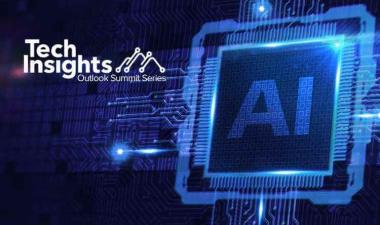Tax Reform for Workforce Development & Silicon Photonics

G. Dan Hutcheson
The Chip Insider®
Summary:
Tax Reform as an Industrial Policy to solve the workforce issue: In late 2020, I wrote '10 Things Biden can do to save Semiconductors,'... The CHIPS Act made it clear there was a bipartisan recognition of the need for change... But there’s plenty more low-hanging fruit, such as item 2: Create a single federal construction-permitting process for building manufacturing facilities that overrides all state and local ordinances... Permitting in the US … versus … Taiwan. For the US that assumes a well-oiled permitting process. Building a fab in a new region can take much longer, despite promises ... Items 7 through 10 were mostly left unaddressed covering the desperate need for a workforce in America that build and operate semiconductor fabrication facilities: Provide financial incentives for college students to get a degree in STEM… Divert income taxes for those working in STEM with college loans, use personal income tax credits to pay off this debt… Provide tax credits for those who work in STEM-related industries (not finance)…
Our industry is trying to solve the workforce issues, such as the SEMI Foundation, SEMI VetWorks, and SEMI U. But it’s a bigger problem, as even TSMC has hit workforce walls in the United States… On July 20th, Mark Liu said in TSMC’s earnings call that “we are encountering … an insufficient amount of skilled workers ...” Some have scoffed at this being an excuse for … 2023’s difficult market environment. Possibly… But I believe Mark is truthful… Why were TSMC and its suppliers working to get visas from the US government for “hundreds of workers” in June to come to Arizona in July of 2023? … tax credit ideas for STEM graduates who go on to work in manufacturing would use labor market incentives to attract workers to technology. The problem is first that they are not a quick solution… The bigger incentive is, would they work? The proof that it can work can be found in a paper I came across by … So it does work.
Why Silicon Photonics has turned hot: Heterogeneous is only part of the solution for packing more density into a package than can be economically accomplished on a single die. People are often blinded by this based on the perspective they take. Looking at it from the system level, compressing it into a chip brings significant power and performance benefits… So the designer’s choice is between aggregated and disaggregated, or integrated and disintegrated… If you will recall, part of the argument for heterogeneous integration is ... Stop right there, because what they didn’t tell you was that regardless of if the chiplet part is in an IC or an HIC, its power consumption is also not scaling... The greater the distance, the greater the power needed and the more that dissipates into heat. This is where a hidden opportunity for photonics lies beyond the speed of light: lowering the power needed to move bits around. Recognition of this, along with critical breakthroughs, are the fundamental reasons why Silicon Photonics has turned hot.
"What you do in life echoes in eternity" - From the Movie “The Gladiator”
If you want to read the full article, click here.
Free Newsletter
Get the latest analysis of new developments in semiconductor market and research analysis.
Subscribers can view more articles in the TechInsights Platform.
You must be a subscriber to access the Manufacturing Analysis reports & services.
If you are not a subscriber, you should be! Enter your email below to contact us about access.









